Search Result
Results for "
genotoxicity
" in MedChemExpress (MCE) Product Catalog:
6
Isotope-Labeled Compounds
| Cat. No. |
Product Name |
Target |
Research Areas |
Chemical Structure |
-
- HY-119329
-
|
Oxiranecarboxamide; 2,3-Epoxypropanamide
|
Others
|
Others
|
|
Glycidamide is the genotoxic metabolite of Acrylamide. Glycidamide can react with proteins, such as hemoglobin, or with DNA, and induces genotoxic effects .
|
-

-
- HY-133647
-
|
|
Others
|
Others
|
|
Dibromoacetaldehyde, a halogenated product, is a byproduct in drinking water and has genotoxicity .
|
-

-
- HY-133648
-
|
|
Others
|
Others
|
|
Bromochloroacetaldehyde belongs to dihalogenated acetaldehyde and is a byproduct in drinking water. Bromochloroacetaldehyde has genotoxicity .
|
-
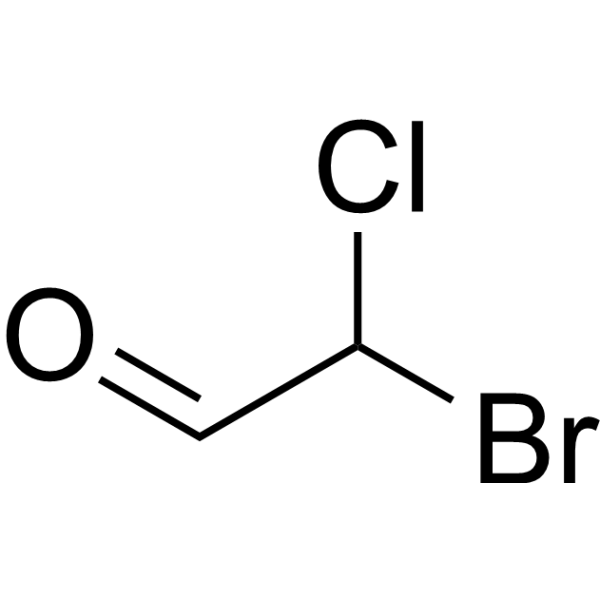
-
- HY-133649
-
|
|
Others
|
Others
|
|
Dibromochloroacetaldehyde belongs to trihalogenated acetaldehyde and is a byproduct in drinking water. Dibromochloroacetaldehyde has genotoxicity .
|
-
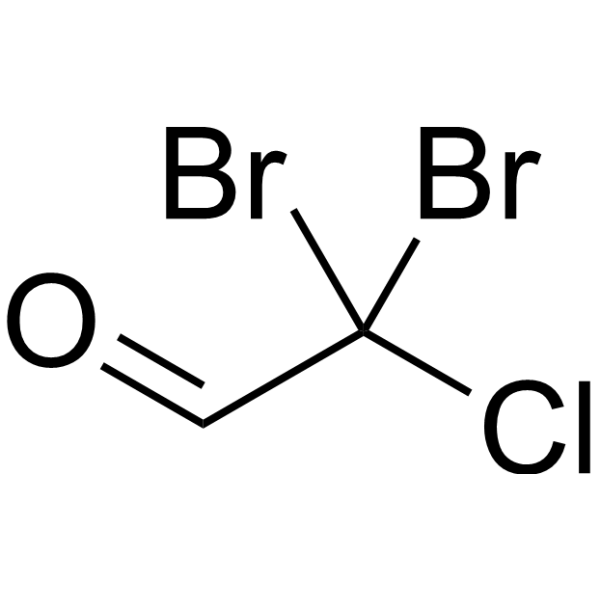
-
- HY-121345
-
|
|
Others
|
Neurological Disease
Cancer
|
|
Homobaldrinal is a decomposition product of Valepotriate (HY-N0718). Homobaldrinal exhibits genotoxic activity in the Salmonella/microsome test .
|
-
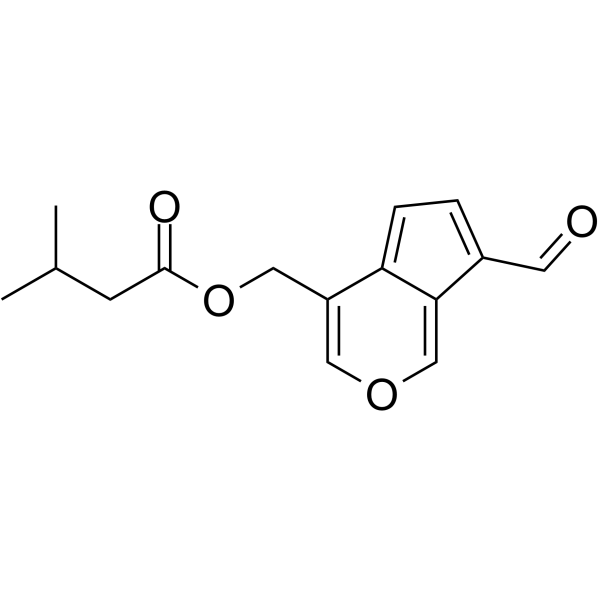
-
- HY-400785
-
|
|
Others
|
Cancer
|
|
Dapagliflozin impurity A (Compound A) is a dapagliflozin peroxide, a genotoxic impurity, can cause damage to human genetic material at very low concentrations, leading to genetic mutations and possibly tumorigenesis .
|
-
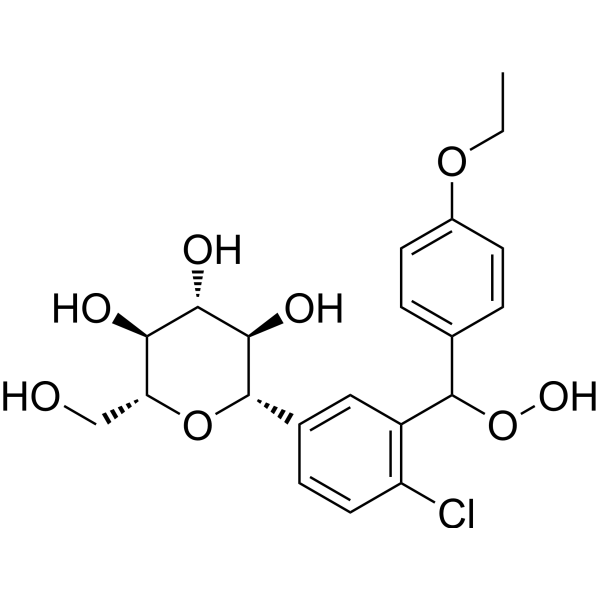
-
- HY-N8022
-
|
Lucidin 3-O-β-primeveroside
|
Biochemical Assay Reagents
|
Cancer
|
|
Lucidin primeveroside (Lucidin 3-O-β-primeveroside) is an anthraquinone derivative present in madder root, which has been used as a coloring agent and food additive. Lucidin primeveroside can be metabolically converted to genotoxic compound Lucidin, which subsequently forms lucidin-specific DNA adducts .
|
-
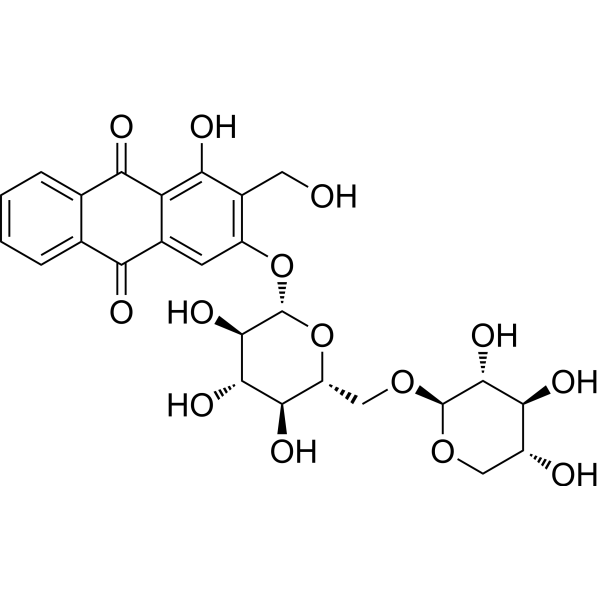
-
- HY-N2081
-
|
|
Others
|
Inflammation/Immunology
Cancer
|
|
Skimmianine is a furoquinoline alkaloid present mainly in the Rutaceae family, with antispastic, anti-inflammatory activities and antiplatelet aggregation effect. Skimmianine exhibits cytotoxicity against a variety of cancer cell lines and genotoxicity .
|
-

-
- HY-151628
-
|
|
Others
|
Cancer
|
|
MRV03-068 (Compound 2) is a selective colibactin-activated peptidase (ClbP) inhibitor that blocks the genotoxic effect of Colibactin (HY-145930) on eukaryotic cells. MRV03-068 can be used in colorectal cancer research .
|
-

-
- HY-151629
-
|
|
Others
|
Cancer
|
|
MRV03-069 (Compound 3) is a selective colibactin-activated peptidase (ClbP) inhibitor that blocks the genotoxic effect of Colibactin (HY-145930) on eukaryotic cells. MRV03-069 can be used in colorectal cancer research .
|
-

-
- HY-119635
-
|
|
Others
|
Cancer
|
|
Albicanol is a sesquiterpenoid with potent antioxidant and antagonistic activities against heavy metal toxicity. Albicanol shows cytotoxicity. Albicanol suppress profenofos (HY-B0832) induced genotoxicity in grass carp hepatocytes .
|
-
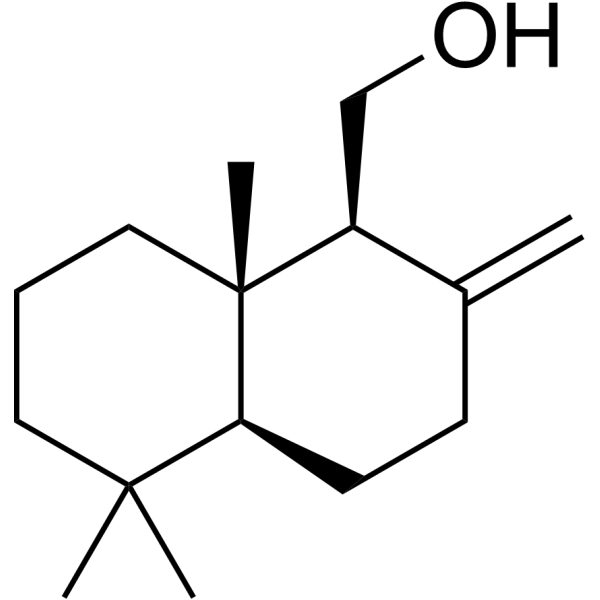
-
- HY-133787
-
|
|
Drug Metabolite
|
Infection
|
|
Levofloxacin N-oxide is a minor metabolite of Levofloxacin (HY-B0330). Levofloxacin N-oxide does not exhibit significantly genotoxic risks. Levofloxacin is an orally active antibiotic and is active against both Gram-positive and Gram-negative bacteria .
|
-
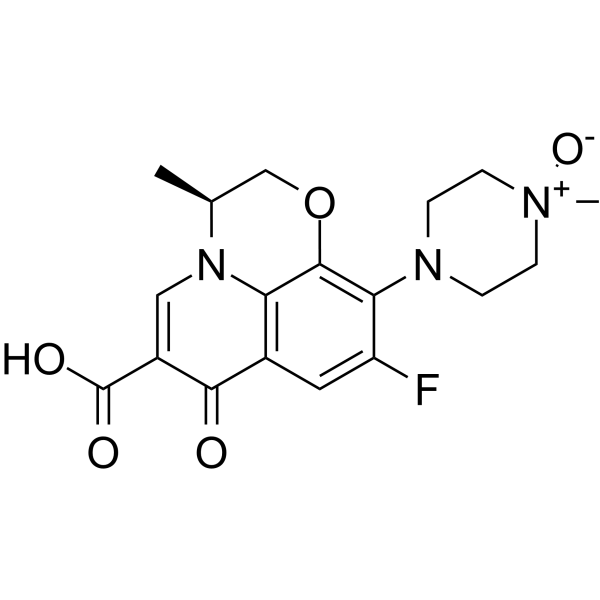
-
- HY-125098
-
|
|
DNA Alkylator/Crosslinker
Apoptosis
|
Infection
Cancer
|
|
Illudin S, a cytotoxic Illudin, is a natural sesquiterpene with strong anti-tumour and antiviral activities. Illudin S has genotoxic activities. Illudin S blocks the G1-S phase interface of the cell cycle in human leukemia cells .
|
-

-
- HY-146121
-
|
|
Bacterial
|
Infection
|
|
Antitubercular agent-26 (Compound 32) is an orally active anti-tubercular agent with an extracellular IC50 of 0.50 μM and an intracellular IC50 of 0.51 μM against M. tuberculosis H37Rv. Antitubercular agent-26 shows good metabolic stability, low risk of cardiotoxicity and no genotoxicity .
|
-

-
- HY-W014940
-
|
|
Reactive Oxygen Species
Apoptosis
|
Others
|
|
Ethylene glycol dimethacrylate is a methacrylate monomer, exhibits cytotoxic and genotoxic effects on human gingival fibroblasts (HGFs). Ethylene glycol dimethacrylate increases intracellular reactive oxygen species (ROS) production, causes DNA damage, increases apoptosis and causes cell cycle arrest in G1/G0 phase .
|
-
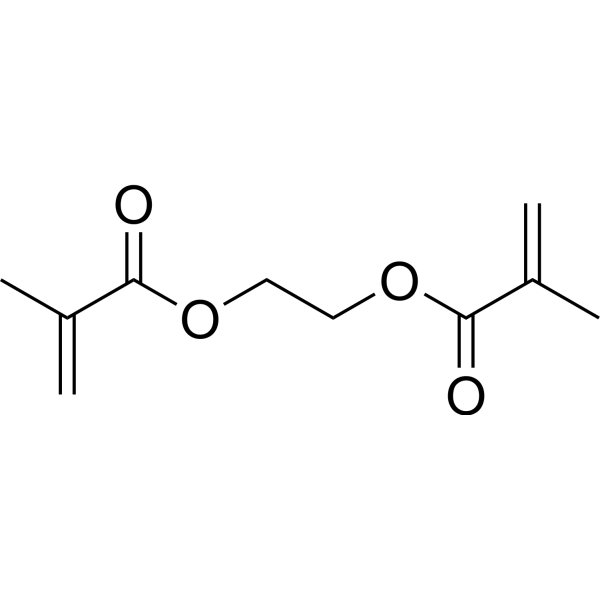
-
- HY-W795264
-
|
|
Parasite
|
Infection
|
|
FR900098 is an antimalarial agent that inhibits 1-deoxy-d-xylulose-5-phosphate (DXP) reductoisomerase. FR900098 has no significant acute toxicity or genotoxicity, and does not have the ability to cause chromosome breakage or heterogeneity. FR900098 has no effect on bone marrow red blood cells in NMRI mice .
|
-
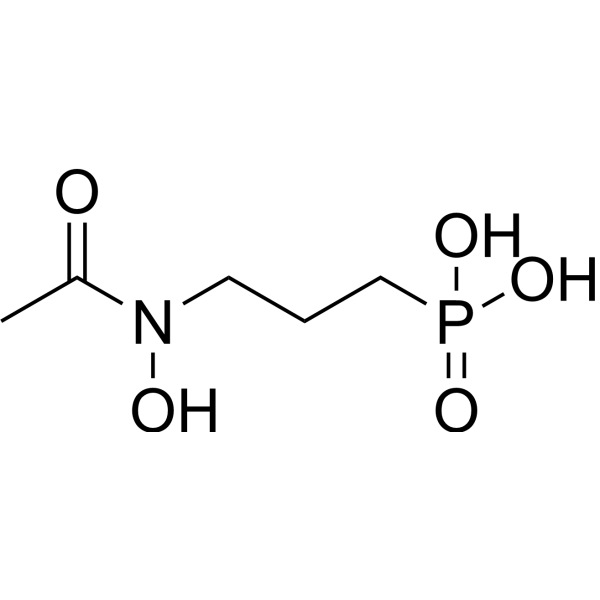
-
- HY-122817
-
|
|
Antibiotic
Parasite
|
Infection
|
|
FR900098 sodium is an antimalarial agent that inhibits 1-deoxy-d-xylulose-5-phosphate (DXP) reductoisomerase. FR900098 sodium has no significant acute toxicity or genotoxicity, and does not have the ability to cause chromosome breakage or heterogeneity. FR900098 sodium has no effect on bone marrow red blood cells in NMRI mice .
|
-

-
- HY-124489S1
-
|
|
Endogenous Metabolite
|
Infection
|
|
2-Hydroxyestradiol-d5 is the deuterium labeled 2-Hydroxyestradiol. 2-Hydroxyestradiol, a metabolite of 17β-estradiol with minimal estrogenic activity, possesses antioxidant effects and reacts with DNA to form stable adducts and exerts genotoxicity[[1][3][4].
|
-

-
- HY-124489S
-
|
|
Isotope-Labeled Compounds
Endogenous Metabolite
|
Metabolic Disease
|
|
2-Hydroxyestradiol- 13C6 is the 13C-labeled 2-Hydroxyestradiol. 2-Hydroxyestradiol, a metabolite of 17β-estradiol with minimal estrogenic activity, possesses antioxidant effects and reacts with DNA to form stable adducts and exerts genotoxicity[1][3].
|
-

-
- HY-121213
-
|
|
Cytochrome P450
|
Cancer
|
|
Erysolin is a CYP1A inhibitor with antigenic toxicity. Erysolin reduces benzo(a)pyrene-induced genotoxicity .
|
-
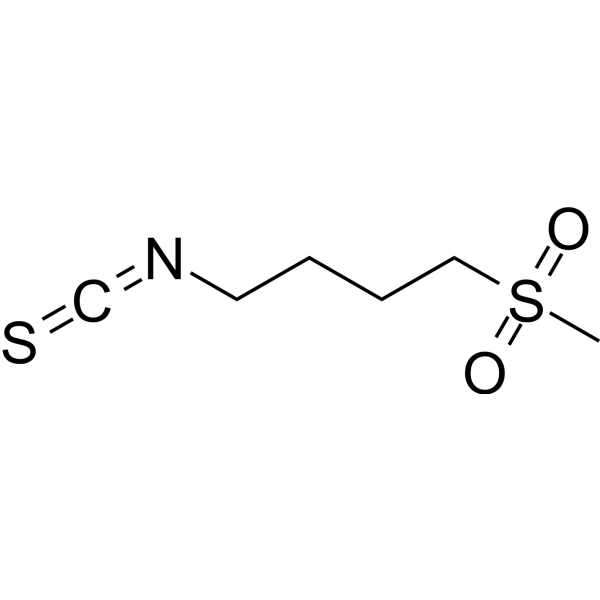
-
- HY-131102
-
|
|
Bacterial
DNA/RNA Synthesis
|
Infection
|
|
Mequindox is an antimicrobial agent . Mequindox acts as an inhibitor of DNA synthesis. Mequindox induces genotoxicity and carcinogenicity in mice .
|
-
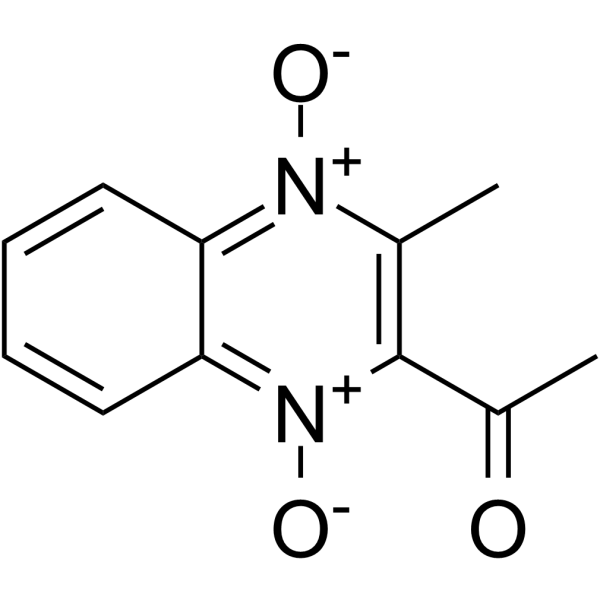
-
- HY-W010553
-
|
|
Others
|
Others
|
|
2,5-Dimethyl-3(2H)-furanone is a flavouring substance without genotoxicity .
|
-

-
- HY-Y0069
-
|
Aceturic acid; Acetamidoacetic acid
|
Endogenous Metabolite
|
Others
|
|
N-Acetylglycine (Aceturic acid) is a minor constituent of numerous foods with no genotoxicity or acute toxicity. N-acetylglycine is used in biological research of peptidomimetics.
|
-
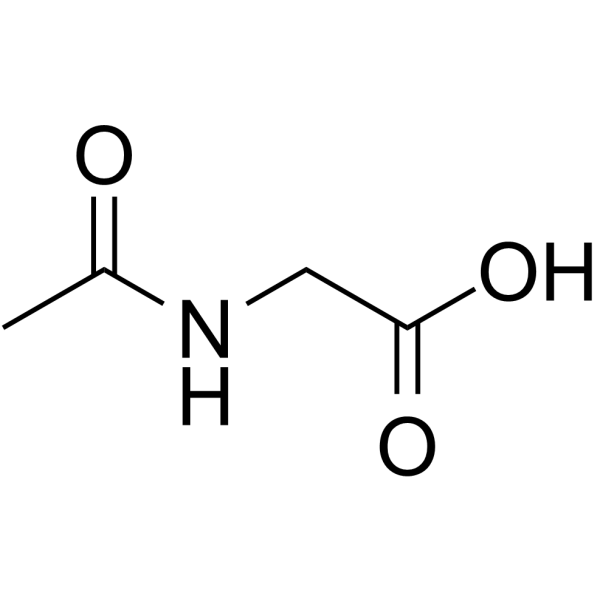
-
- HY-N4183
-
|
|
Others
|
Cancer
|
|
Licoflavone C is a prenyl-flavone extracted from Genista ephedroides, reduces the genotoxicity of cancer agents in human peripheral lymphocytes .
|
-
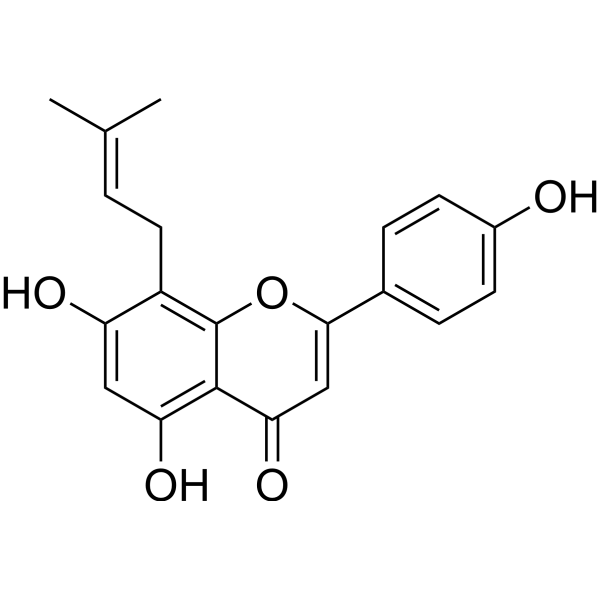
-
- HY-136375
-
|
|
Others
|
Others
|
|
Cyanazine, a triazine herbicide cyanazine, is used to control a variety of grass weeds and broadleaf weed. Cyanazine is proved non-genotoxic .
|
-

-
- HY-122099
-
|
|
DNA/RNA Synthesis
|
Others
|
|
Riddelline, a pyrrolizidine alkaloid, is a potent genotoxic agent. Riddelline induces significant elevations in unscheduled DNA synthesis and S-phase synthesis in rat liver .
|
-
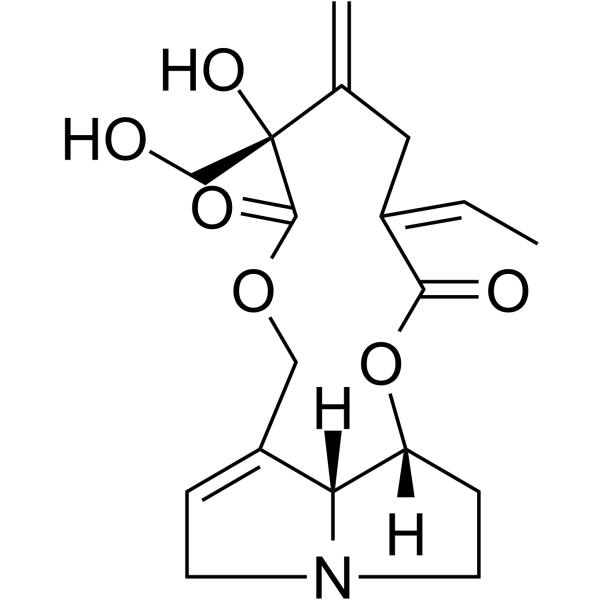
-
- HY-118948
-
|
|
Bcl-2 Family
|
Neurological Disease
|
|
MSN-50 is a Bax and Bak oligomerization inhibitor. MSN-50 efficiently inhibits liposome permeabilization, prevents genotoxic cell death and promotes neuroprotection .
|
-

-
- HY-116108
-
|
Musk tibetine
|
Others
|
Cancer
|
|
Musk tibetene (Musk tibetine) is a nitro musk compound with carcinogenic activity. Musk tibetine reveals no genotoxicity in the micronucleus test with human lymphocytes and human hepatoma cell line .
|
-

-
- HY-124489
-
|
|
Endogenous Metabolite
|
Metabolic Disease
|
|
2-Hydroxyestradiol, a metabolite of 17β-estradiol with minimal estrogenic activity, possesses antioxidant effects and reacts with DNA to form stable adducts and exerts genotoxicity .
|
-

-
- HY-136375S
-
|
|
Isotope-Labeled Compounds
|
Others
|
|
Cyanazine-d5 is deuterium labeled Cyanazine. Cyanazine, a triazine herbicide cyanazine, is used to control a variety of grass weeds and broadleaf weed. Cyanazine is proved non-genotoxic[1].
|
-
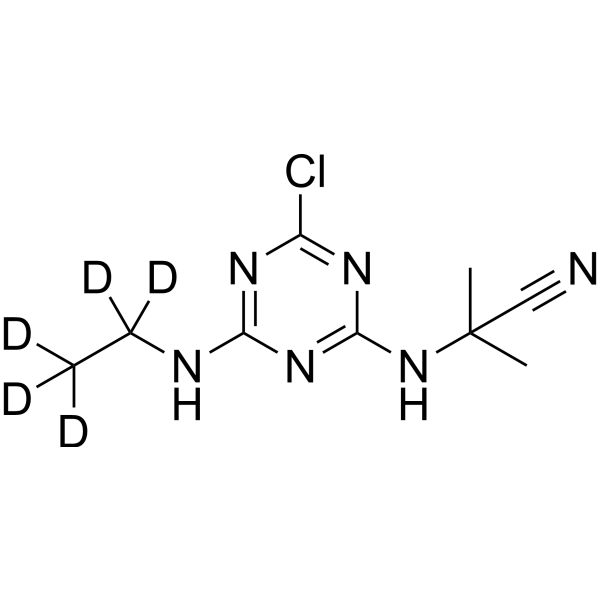
-
- HY-154958
-
|
|
mTOR
|
Neurological Disease
|
|
mTOR inhibitor-12 (Compound 11) is a selective brain penetrant mTOR inhibitor without genotoxicity risk. mTOR inhibitor-12 can be used for the research of CNS diseases .
|
-
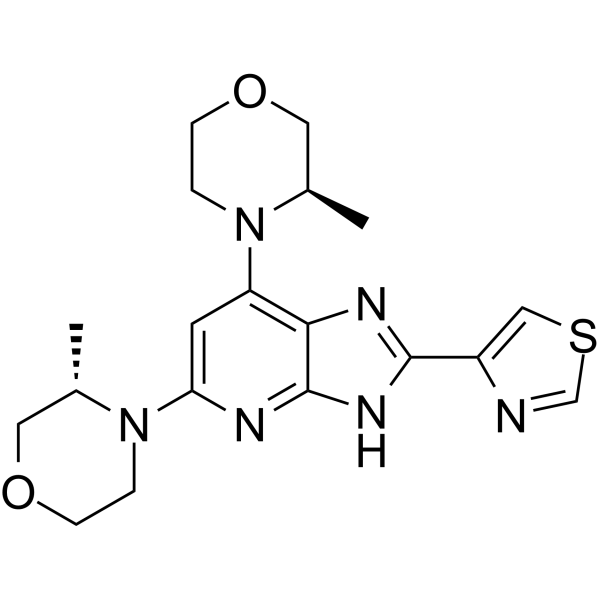
-
- HY-Y0069S
-
|
Aceturic acid-d5; Acetamidoacetic acid-d5
|
Isotope-Labeled Compounds
Endogenous Metabolite
|
|
|
N-Acetylglycine-d5 is the deuterium labeled N-Acetylglycine. N-Acetylglycine (Aceturic acid) is a minor constituent of numerous foods with no genotoxicity or acute toxicity. N-acetylglycine is used in biological research of peptidomimetics.
|
-

-
- HY-125815
-
|
|
Fluorescent Dye
|
Others
|
|
Reactive Blue 4 is an anthraquinone dye, as a single colorimetric chemosensor for sequential determination of multiple analytes with different optical responses in aqueous media. Reactive Blue 4 is phytotoxic, cytotoxic and genotoxic. Reactive Blue 4 .
|
-
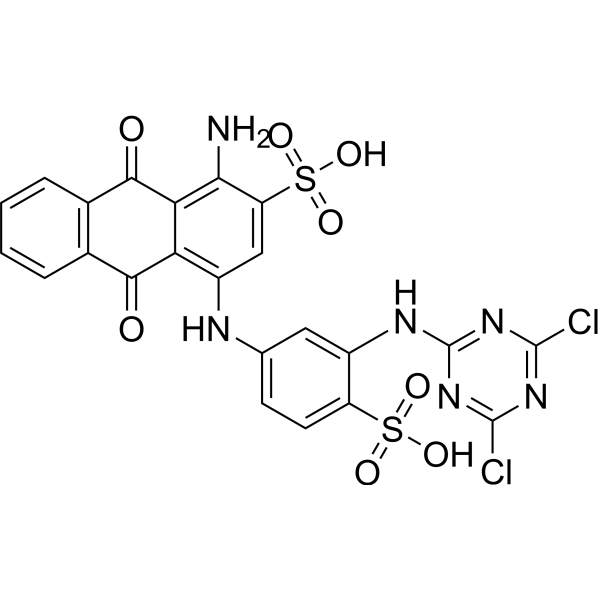
-
- HY-151626
-
|
|
Bacterial
|
Infection
|
|
MRV03-037 is a selective colibactin-activated peptidase (ClbP) inhibitor that blocks the genotoxic effect of Colibactin (HY-145930) on eukaryotic cells. MRV03-037 prevents gut bacterial genotoxin production .
|
-
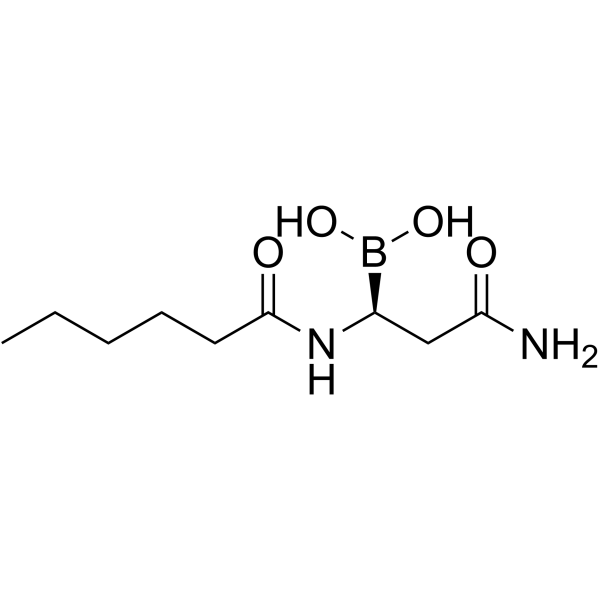
-
- HY-W612269S
-
|
|
Isotope-Labeled Compounds
|
Others
|
|
Isonicotinoyl chloride-d4 is the deuterated labeled Isonicotinoyl chloride (HY-W612269). N-Acetylglycine (Aceturic acid) is a minor constituent of numerous foods with no genotoxicity or acute toxicity. N-acetylglycine is used in biological research of peptidomimetics .
|
-

-
- HY-N2627
-
|
|
Others
|
Cancer
|
|
Isorhamnetin 3-O-robinobioside is a flavonoid compound. Isorhamnetin shows a protective effect against lipid peroxidation induced by H2O2. Isorhamnetin 3-O-robinobioside also inhibits the genotoxicity induced by hydroxyl radicals .
|
-
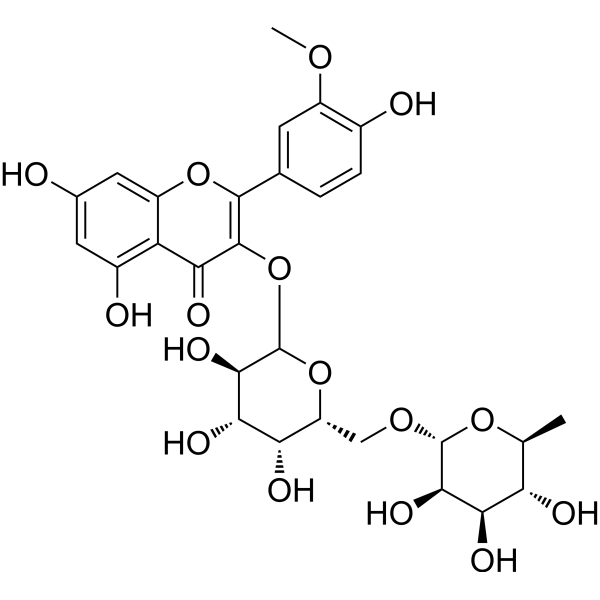
-
- HY-N1094
-
|
|
PARP
MDM-2/p53
|
Inflammation/Immunology
|
|
Verminoside is an iridoid isolated from Kigelia africana, exhibits anti-inflammatory and remarkable antioxidant activity with a radical-scavenging activity of 2.5 μg/mL. The genotoxicity of Verminoside on human lymphocytes is associated with elevated levels of PARP-1 and p53 proteins .
|
-
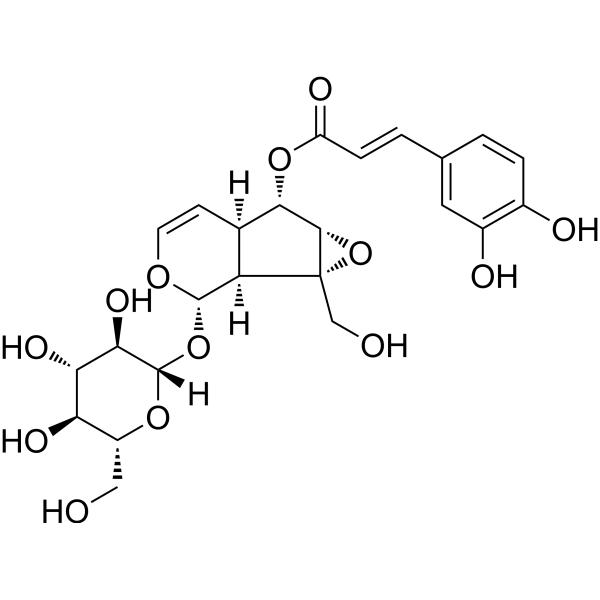
-
- HY-139149
-
|
|
Histone Acetyltransferase
|
Cancer
|
|
NiCur is a potent and selective CBP histone acetyltransferase (HAT) inhibitor with an IC50 value of 0.35 μΜ. NiCur, which blocks CBP HAT activity and downregulates p53 activation upon genotoxic stress. NiCur can be used for performing mechanistic studies without affecting the expression of target proteins .
|
-
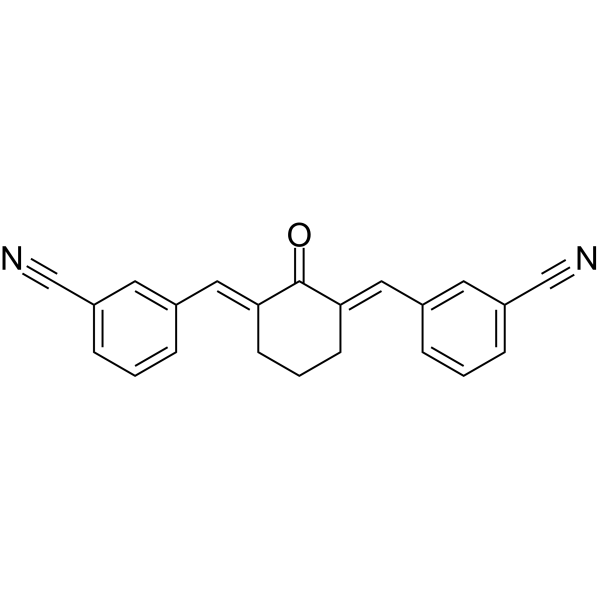
-
- HY-B0928
-
|
Homomenthyl salicylate
|
Biochemical Assay Reagents
|
Others
|
|
Homosalate (Homomenthyl salicylate) is an organic compound used as a sunscreen to filter UV rays and protect the skin from sun damage. Homosalate has anti-inflammatory activity .
|
-
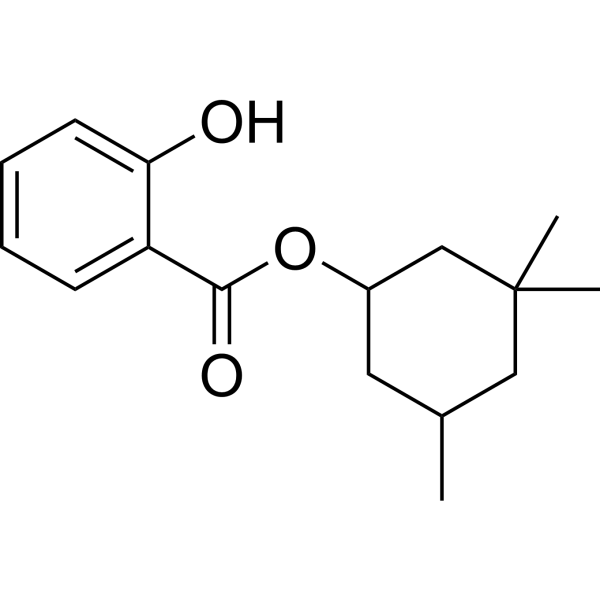
-
- HY-D0249
-
|
Orange Yellow S; Food Yellow 3; CI 15985
|
Fluorescent Dye
|
Others
|
|
Sunset Yellow FCF (Orange Yellow S) is an orange azo dye with a maximum absorption wavelength of 480 nm. Sunset Yellow FCF can be used in food, cosmetics and pharmaceuticals .
|
-
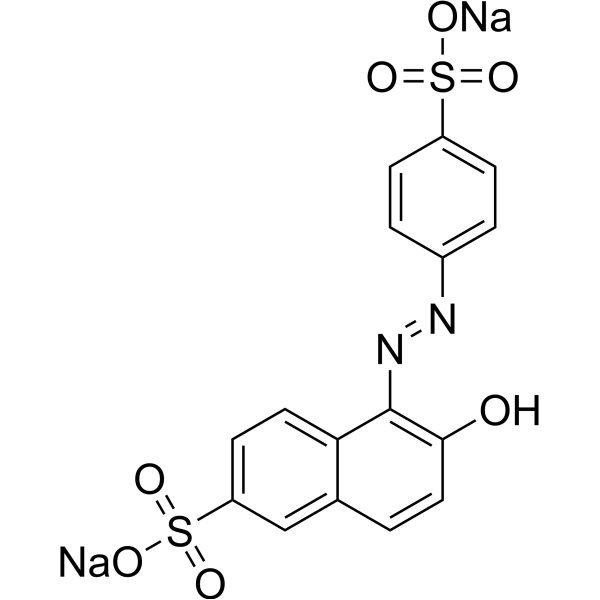
-
- HY-136440
-
|
Metronidazole-OH
|
Bacterial
Parasite
|
Infection
|
|
Hydroxymetronidazole (Metronidazole-OH) is a metabolite of Metronidazole belonging to the class of nitroimidazoles. Hydroxymetronidazole can be used for the research of certain bacterial and protozoal diseases in poultry, swine dysentery and genital trichomoniasis in cattle .
|
-
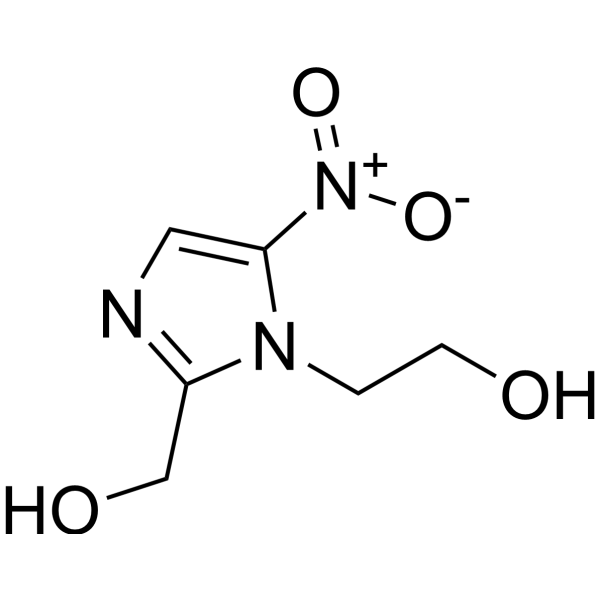
-
- HY-Y0069S1
-
|
Aceturic acid-d2; Acetamidoacetic acid-d2
|
Isotope-Labeled Compounds
Endogenous Metabolite
|
Others
|
|
N-Acetylglycine-d2 (Aceturic acid-d2; Acetamidoacetic acid-d2) is the deuterated labeled N-Acetylglycine (HY-Y0069). N-Acetylglycine (Aceturic acid) is a minor constituent of numerous foods with no genotoxicity or acute toxicity. N-acetylglycine is used in biological research of peptidomimetics .
|
-
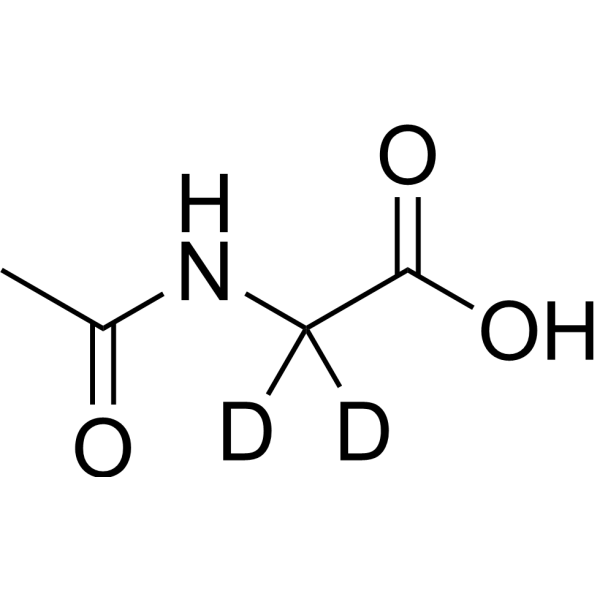
-
- HY-152187
-
|
|
Topoisomerase
Apoptosis
|
Others
|
|
Topoisomerase IIα-IN-5 is a topoisomerase II (topo II) α catalytic inhibitor. Topoisomerase IIα-IN-5 intercalates into DNA and binds to the DNA minor groove. Topoisomerase IIα-IN-5 exhibits better efficacy and less genotoxicity than Etoposide (HY-13629) .
|
-
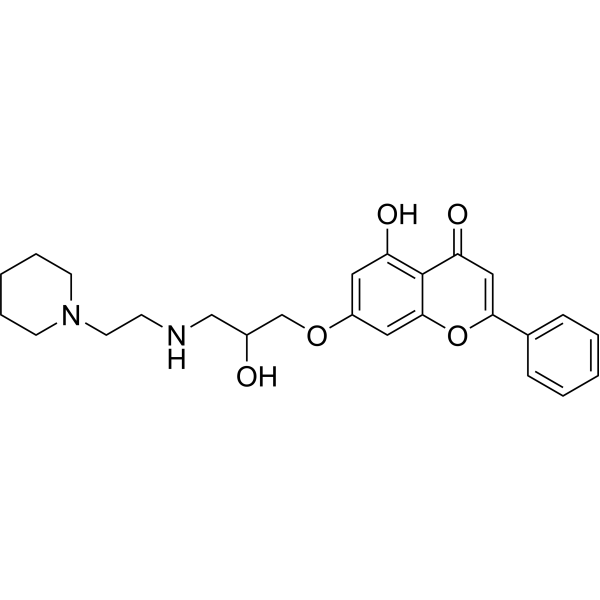
-
- HY-152775
-
|
|
Histone Methyltransferase
|
Cancer
|
|
RK-701 is an highly selective and non-genotoxic inhibitor of G9a with IC50 value of 23-27 nM. RK-701 selectively up-regulates HbF, γ- Globin, BGLT3 expression, down-regulates H3K9me2 expression. RK-701 also has inhibition for BCL11A and ZBTB7A .
|
-
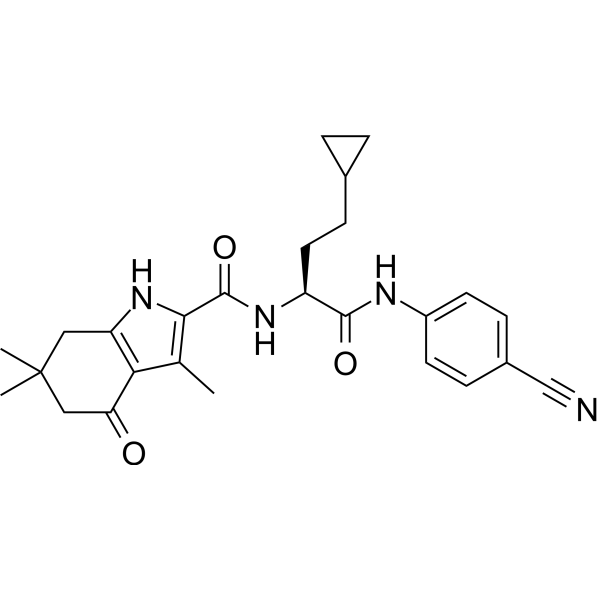
-
- HY-W001189
-
|
|
Bacterial
Endogenous Metabolite
|
Infection
|
|
1,3-Dithiane is a protected formaldehyde anion equivalent that could serve as a useful labeled synthon . 1,3-Dithiane is also a sulfur-containing Maillard reaction products (MRPs) found in boiled beef extracts. 1,3-Dithiane shows a potent direct-acting mutagenicity toward S. typhimurium TA98 and TA100 .
|
-

-
- HY-D0342
-
|
|
Fluorescent Dye
|
Others
|
|
Disperse Red 1, an azobenzene derivative, is an azo textile dye extensively used for dyeing polyester fabrics in textile industry .
|
-

-
- HY-113466
-
|
4-HNE
|
Aldehyde Dehydrogenase (ALDH)
Endogenous Metabolite
|
Cardiovascular Disease
Neurological Disease
Cancer
|
|
4-Hydroxynonenal (4-HNE) is an α,β unsaturated hydroxyalkenal and an oxidative/nitrosative stress biomarker. 4-Hydroxynonenal is a substrate and an inhibitor of acetaldehyde dehydrogenase 2 (ALDH2). 4-Hydroxynonenal can modulate a number of signaling processes mainly through forming covalent adducts with nucleophilic functional groups in proteins, nucleic acids, and membrane lipids. 4-Hydroxynonenal plays an important role in cancer through mitochondria .
|
-
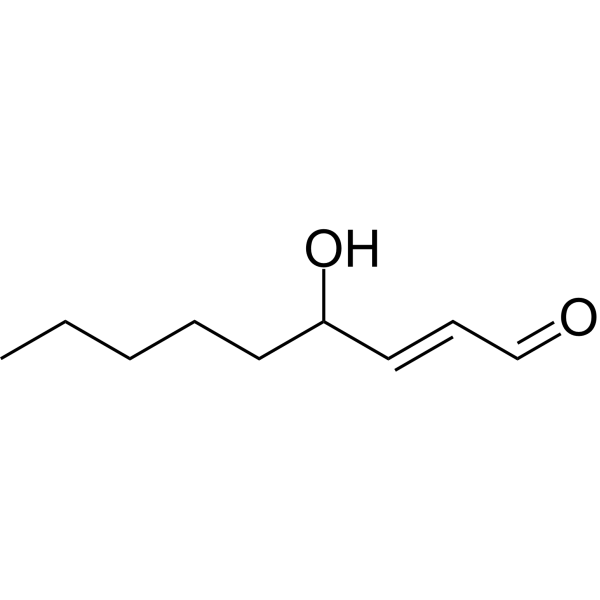
-
- HY-W006566
-
|
5-Aminoisoquinolin-1-one
|
PARP
|
Cancer
|
|
5-AIQ (5-Aminoisoquinolin-1-one) is a water-soluble PARP-1 inhibitor. 5-AIQ is an important functional group in various drugs. 5-AIQ reduces the tissue injury associated with ischemia-reperfusion of the liver, it can be used for the research of the research conditions associated with ischemia-reperfusion of the liver .
|
-
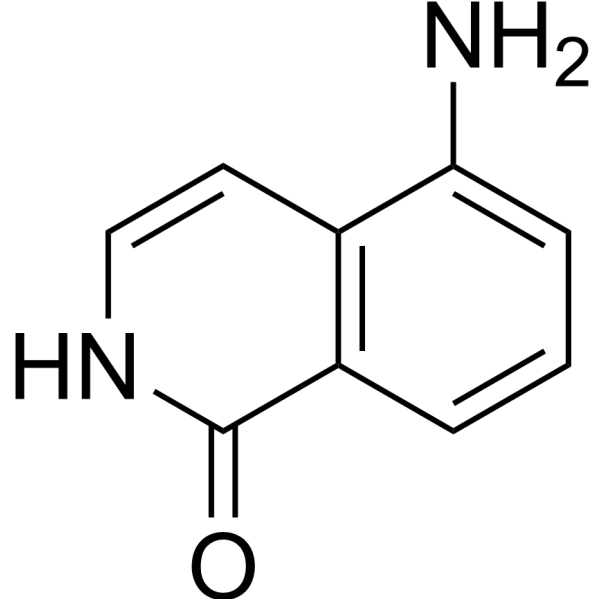
-
- HY-137316
-
-
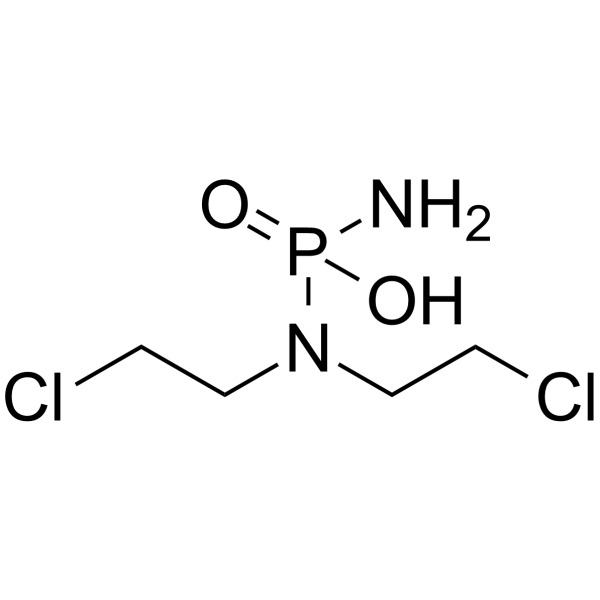
-
- HY-137316A
-
|
|
DNA Alkylator/Crosslinker
Drug Metabolite
|
Cancer
|
|
Phosphoramide mustard cyclohexanamine is a biologically active metabolite of Cyclophosphamide (HY-17420), with anticancer activitiy. Phosphoramide mustard cyclohexanamine induces DNA damage .
|
-
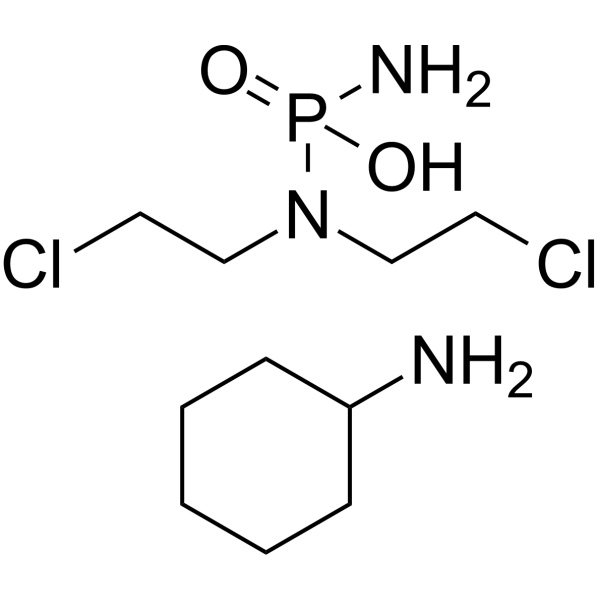
| Cat. No. |
Product Name |
Type |
-
- HY-125815
-
|
|
Dyes
|
|
Reactive Blue 4 is an anthraquinone dye, as a single colorimetric chemosensor for sequential determination of multiple analytes with different optical responses in aqueous media. Reactive Blue 4 is phytotoxic, cytotoxic and genotoxic. Reactive Blue 4 .
|
-
- HY-D0249
-
|
Orange Yellow S; Food Yellow 3; CI 15985
|
Dyes
|
|
Sunset Yellow FCF (Orange Yellow S) is an orange azo dye with a maximum absorption wavelength of 480 nm. Sunset Yellow FCF can be used in food, cosmetics and pharmaceuticals .
|
-
- HY-D0342
-
|
|
Dyes
|
|
Disperse Red 1, an azobenzene derivative, is an azo textile dye extensively used for dyeing polyester fabrics in textile industry .
|
| Cat. No. |
Product Name |
Category |
Target |
Chemical Structure |
| Cat. No. |
Product Name |
Chemical Structure |
-
- HY-124489S1
-
|
|
|
2-Hydroxyestradiol-d5 is the deuterium labeled 2-Hydroxyestradiol. 2-Hydroxyestradiol, a metabolite of 17β-estradiol with minimal estrogenic activity, possesses antioxidant effects and reacts with DNA to form stable adducts and exerts genotoxicity[[1][3][4].
|
-

-
- HY-Y0069S
-
|
|
|
N-Acetylglycine-d5 is the deuterium labeled N-Acetylglycine. N-Acetylglycine (Aceturic acid) is a minor constituent of numerous foods with no genotoxicity or acute toxicity. N-acetylglycine is used in biological research of peptidomimetics.
|
-

-
- HY-124489S
-
|
|
|
2-Hydroxyestradiol- 13C6 is the 13C-labeled 2-Hydroxyestradiol. 2-Hydroxyestradiol, a metabolite of 17β-estradiol with minimal estrogenic activity, possesses antioxidant effects and reacts with DNA to form stable adducts and exerts genotoxicity[1][3].
|
-

-
- HY-136375S
-
|
|
|
Cyanazine-d5 is deuterium labeled Cyanazine. Cyanazine, a triazine herbicide cyanazine, is used to control a variety of grass weeds and broadleaf weed. Cyanazine is proved non-genotoxic[1].
|
-

-
- HY-W612269S
-
|
|
|
Isonicotinoyl chloride-d4 is the deuterated labeled Isonicotinoyl chloride (HY-W612269). N-Acetylglycine (Aceturic acid) is a minor constituent of numerous foods with no genotoxicity or acute toxicity. N-acetylglycine is used in biological research of peptidomimetics .
|
-

-
- HY-Y0069S1
-
|
|
|
N-Acetylglycine-d2 (Aceturic acid-d2; Acetamidoacetic acid-d2) is the deuterated labeled N-Acetylglycine (HY-Y0069). N-Acetylglycine (Aceturic acid) is a minor constituent of numerous foods with no genotoxicity or acute toxicity. N-acetylglycine is used in biological research of peptidomimetics .
|
-

Your information is safe with us. * Required Fields.
Inquiry Information
- Product Name:
- Cat. No.:
- Quantity:
- MCE Japan Authorized Agent:


























































